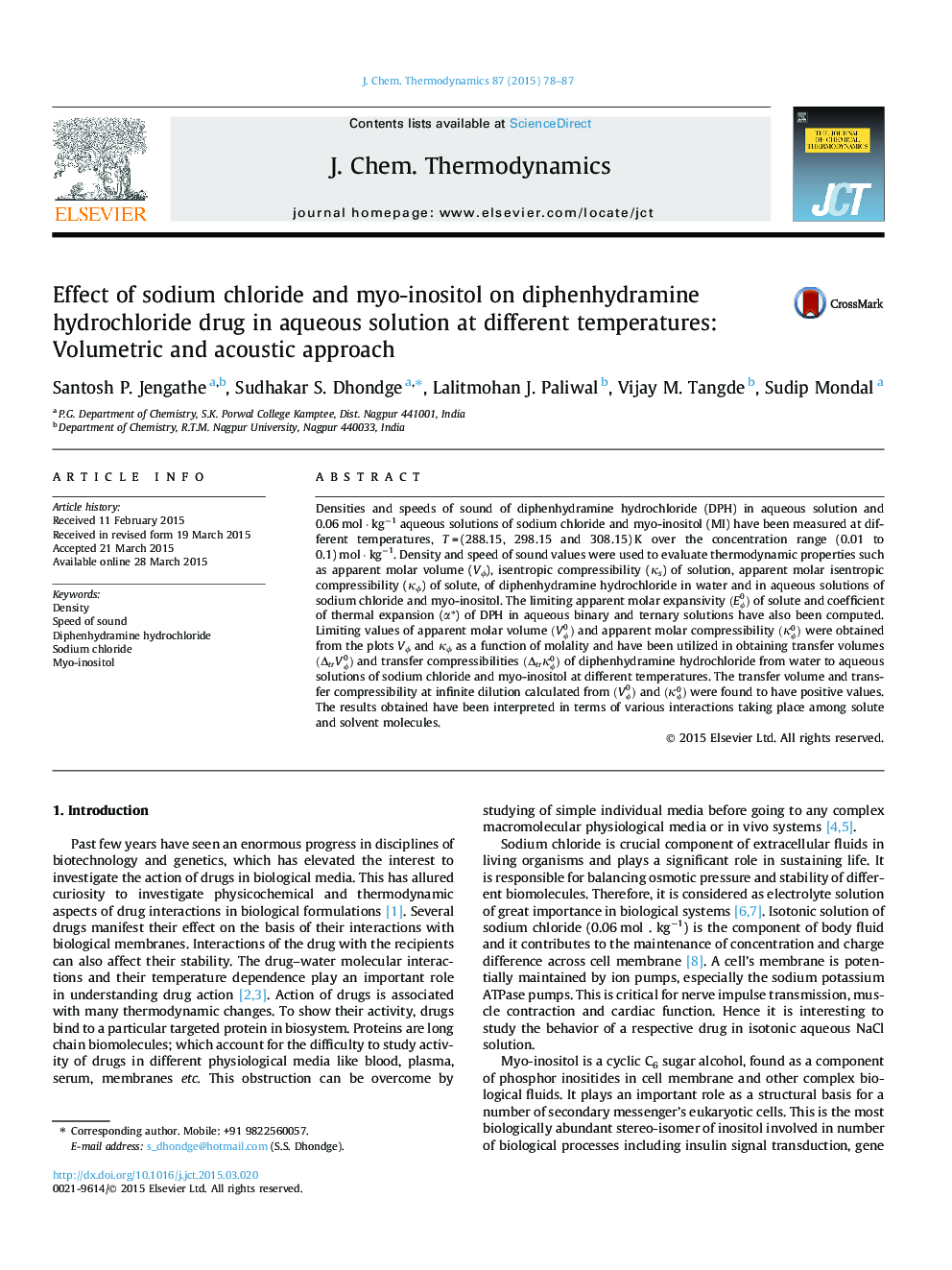| Article ID | Journal | Published Year | Pages | File Type |
|---|---|---|---|---|
| 215150 | The Journal of Chemical Thermodynamics | 2015 | 10 Pages |
•Density and speed of sound are measured for DPH in water and aqueous solutions of sodium chloride and myo-inositol.•Solvation behavior of DPH studied in aqueous solutions of sodium chloride and myo-inositol.•Co-sphere overlap model is used to understand the transfer partial molar volume.•Hepler’s constant indicated structure making ability of DPH in studied systems.
Densities and speeds of sound of diphenhydramine hydrochloride (DPH) in aqueous solution and 0.06 mol · kg−1 aqueous solutions of sodium chloride and myo-inositol (MI) have been measured at different temperatures, T = (288.15, 298.15 and 308.15) K over the concentration range (0.01 to 0.1) mol · kg−1. Density and speed of sound values were used to evaluate thermodynamic properties such as apparent molar volume (Vϕ), isentropic compressibility (κs) of solution, apparent molar isentropic compressibility (κϕ ) of solute, of diphenhydramine hydrochloride in water and in aqueous solutions of sodium chloride and myo-inositol. The limiting apparent molar expansivity (Eϕ0) of solute and coefficient of thermal expansion (α∗) of DPH in aqueous binary and ternary solutions have also been computed. Limiting values of apparent molar volume (Vϕ0) and apparent molar compressibility (κϕ0) were obtained from the plots Vϕ and κϕ as a function of molality and have been utilized in obtaining transfer volumes (ΔtrVϕ0) and transfer compressibilities (Δtrκϕ0) of diphenhydramine hydrochloride from water to aqueous solutions of sodium chloride and myo-inositol at different temperatures. The transfer volume and transfer compressibility at infinite dilution calculated from (Vϕ0) and (κϕ0) were found to have positive values. The results obtained have been interpreted in terms of various interactions taking place among solute and solvent molecules.
Graphical abstractFigure optionsDownload full-size imageDownload as PowerPoint slide
